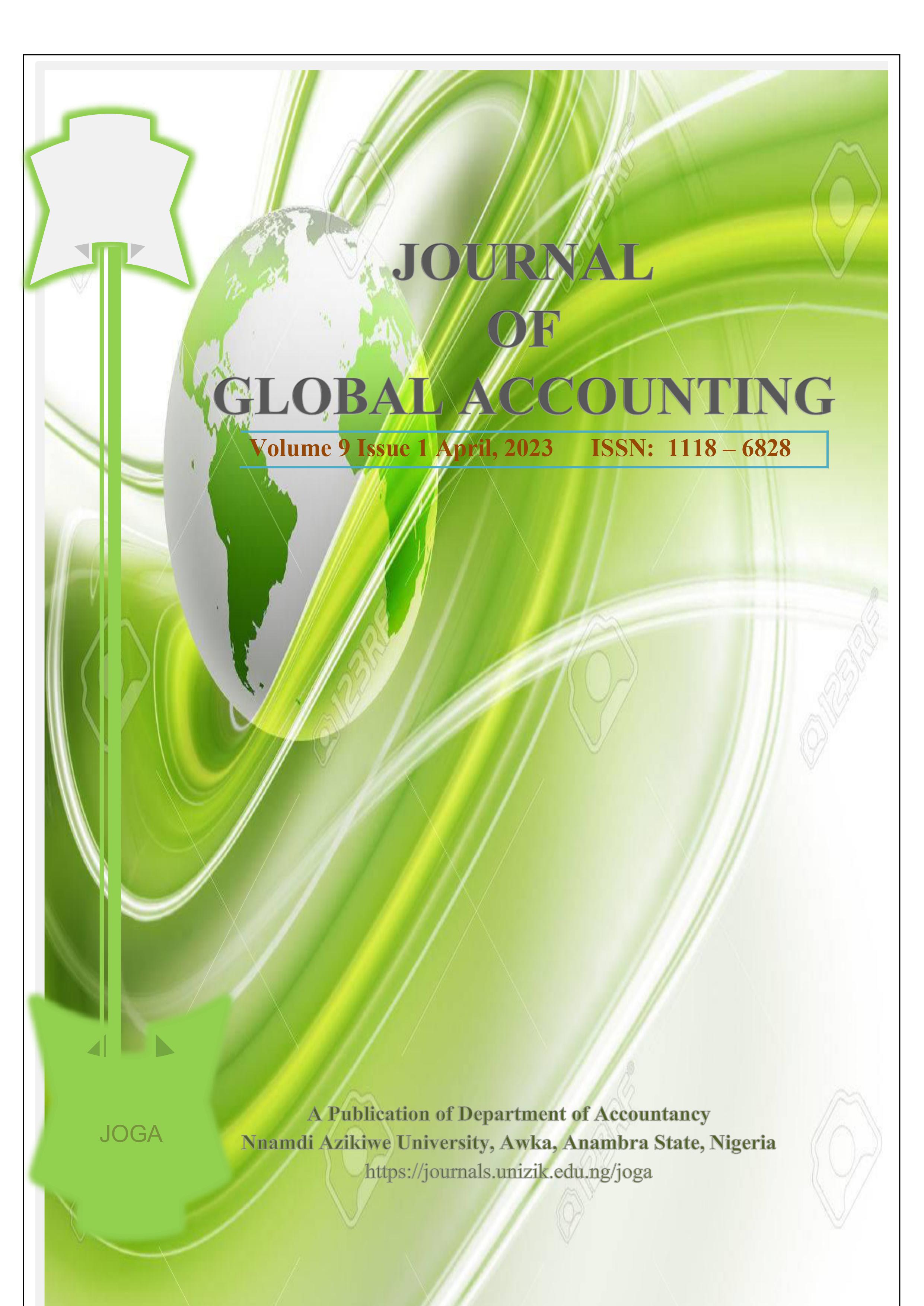CAPITAL STRUCTURE AND CORPORATE ENVIRONMENTAL RESPONSIBILITY OF INDUSTRIAL GOODS FIRMS LISTED ON NIGERIAN EXCHANGE GROUP
Keywords:
Capital Structure, Debt to Asset Ratio, Debt to Equity Ratio, Environmental Disclosure Index, Environmental Responsibility, Long-Term Debt to Equity Ratio, Short-Term Debt to Asset RatioAbstract
The study examined the effect of capital structure on the environmental responsibility of listed industrial goods firms in Nigeria. The study specifically examined the effect of debt to equity ratio, debt to asset ratio, long-term debt to equity ratio and short-term debt to asset ratio on environmental disclosure index of listed industrial firms in Nigeria. The ex-post facto research design was used in this research alongside a sample size of eleven (11) companies purposively selected from a population of thirteen (13) industrial goods firms listed on the Nigerian Exchange Group. Secondary data was retrieved from the corporate annual reports of the sampled firms for the period 2012-2021 financial years. Pooled Ordinary Least Square variant of panel regression was conducted at 5% level of significance. The findings revealed that: debt to asset ratio significantly and positively affects the environmental disclosure index of industrial goods firms listed on the Nigerian Exchange Group (β = 0.147697, p-value = 0.0090); debt to equity ratio does not significantly affect the environmental disclosure index of industrial goods firms listed on the Nigerian Exchange Group (β = -0.000390, p-value = 0.8946); long-term debt to equity ratio does not significantly affect the environmental disclosure index of industrial goods firms listed on the Nigerian Exchange Group (β = 0.000872, p-value = 0.9012); short-term debt to asset ratio significantly and negatively affects the environmental disclosure index of industrial goods firms listed on the Nigerian Exchange Group (β = -0.113424, p-value = 0.0353). It was concluded that involvement in environmental responsibility shapes the external perceptions of a firm by helping relevant stakeholders assess whether the firm is a good corporate citizen, and thus justifies the firm’s continued existence even to lenders as well as shareholders. It was recommended that government should encourage companies to engage in environmental initiatives through the development of incentives and subsidies for environmentally responsible firms, as well as through increased public awareness about the importance of environmental sustainability.
Downloads
Published
Issue
Section
License
Copyright (c) 2023 JOGAArticles submitted to JOGA should not have been published or are currently under review by another Journal. Kindly see the guide for the preparation of the manuscript for details. Successful submission of articles by author(s) for publication clearly implies that the work is not an infringement of any existing copyright warranty as JOGA reserves the right to be indemnified by the author(s) where any breach of such warranty is proven. For ease of dissemination and to ensure proper policing of use, papers and contributions become the legal copyright of JOGA once published unless otherwise agreed.
Permission clearance should be obtained by the author(s) where applicable for the use of any content of interest not originally created by them. This must be done before the submission of the article to JOGA. Failure to do so may lead to a lengthy delay in publication, as JOGA is unable to publish any article which has permissions pending. Thus, the rights JOGA requires are:
- Non-exclusive right to reproduce the material in the article or book chapters.
- Print and electronic rights.
- To use the material for the life of the work (for instance, there should be no time restrictions on the re-use of material).
Where tables, figures or excerpts of more than 250 words are reproduced from another source, it is expected that:
- Author(s) should obtain the necessary written permission in advance from any third-party owner of the copyright for the use in print and electronic formats of any of their text, illustrations, graphics, or other material in their manuscript. Permission must also be cleared for any minor adaptations of any work not originally created by the author(s). The author (s) should not assume that any content freely available on the web is free to use.
- Where the author adapts a significant number of any material, the author(s) must inform the copyright holder of the original work.
- Author obtains any proof of consent statements
- The author must acknowledge figure(s) and content adopted or adapted in work utilizing source(s) and further capture them in the list of references.

